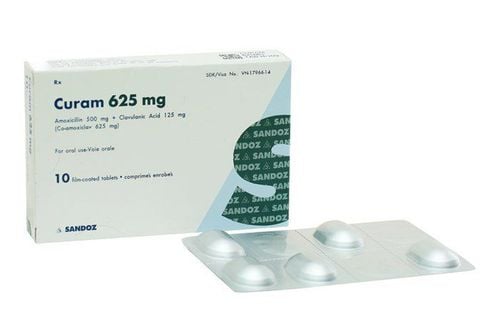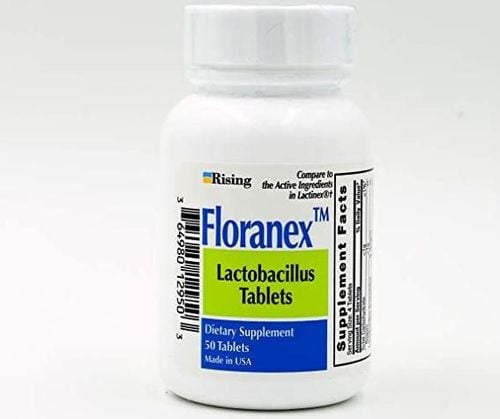This is an automatically translated article.
Kaloxacin belongs to the group of anti-parasitic drugs, anti-infectives, containing the main ingredient is Ofloxacin. The drug is used to treat infectious diseases in organs such as the genitourinary tract, respiratory tract, blood infections, soft tissue infections,...1. What is Kaloxacin?
Kaloxacin is a quinolone antibiotic, containing the active ingredient Ofloxacin, in the form of film-coated tablets, effective in the treatment of infections caused by susceptible bacteria.Ofloxacin is a fluoroquinolone antibiotic, in the same group as the antibiotic ciprofloxacin, but after oral administration, the drug has a bioavailability higher than 95%. The drug has a bactericidal effect, the mechanism of action is currently not fully known. Ofloxacin inhibits the enzyme DNA-gyrase, which is an essential enzyme in DNA replication, transcription, and DNA repair in bacteria. The drug has a broad antibacterial spectrum including Enterobacteriaceae, Staphylococcus, Pseudomonas aeruginosa, HI bacteria, Neisseria spp., Streptococcus pneumoniae and a few other gram-positive bacteria. Ofloxacin drug has stronger effect than ciprofloxacin drug against Chlamydia trachomatis, Mycoplasma pneumoniae, Ureaplasma urealyticum bacteria. After oral administration, Kaloxacin is well absorbed with almost 100% bioavailability. Peak plasma concentrations of the drug are reached within 6 hours after oral administration. Food may slow absorption of the drug, but it does not affect the extent to which it is absorbed. Approximately 25% of Kaloxacin is bound to plasma proteins. The drug is widely distributed in many body tissues and fluids including skin tissues, lungs, vesicles, ovaries, cervix, sputum, tissues and prostate secretions. The drug is eliminated mainly in the urine by renal filtration. Approximately 75 to 80% of the dose is excreted in the urine as unchanged drug. The elimination half-life of the drug in the blood varies from 5 hours to 8 hours, which is longer in the case of severe renal impairment.
2. Indications and contraindications of the drug Kaloxacin
2.1. Point
Kaloxacin is used in the following indications:Adult patients with urinary tract and genital infections: including pyelonephritis, prostatitis, cystitis, epididymitis, post-operative infection art. Treatment of respiratory infections including pneumonia, lung abscess, bronchitis, bronchiectasis, sinusitis, otitis media, tonsillitis. Treatment of infections in the eye organs, blood, musculoskeletal tissues, skin or soft tissue infections, infections in obstetrics and gynecology.
2.2. Contraindications
Do not use Kaloxacin in the following contraindications:Patients are allergic to quinolones, excipients. Children who are going through puberty, people who are pregnant, young children, and women who are breastfeeding should not take Kaloxacin.
3. How to use and dose of Kaloxacin
How to use: Kaloxacin is used orally, because food does not affect the ability to absorb the drug, so patients can take Kaloxacin at any time without regard to meals.Dosage: Kaloxacin is prescribed by the treating doctor, or the patient can refer to the recommended dose from the manufacturer as follows:
Oral dose of 200mg to 400mg each time, 2 times a day. The course of medication is from 7 days to 14 days. In case of patients with renal failure with ClCr 20 - 50 mL/min: It is necessary to reduce the dose by half, when ClCr < 20 mL/min: It is necessary to reduce the dose by half and alternate days.













